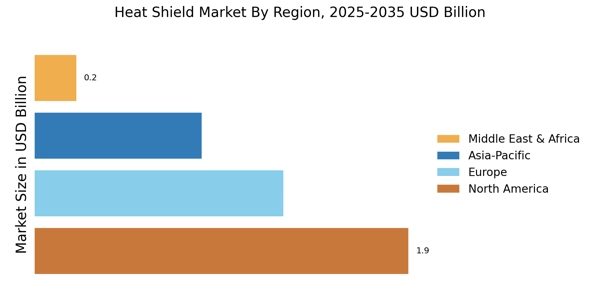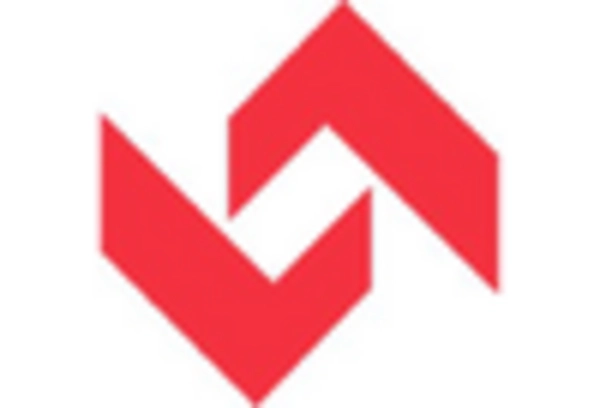Growing Focus on Energy Efficiency
The Heat Shield Market is witnessing a growing focus on energy efficiency across various sectors. As industries strive to reduce energy consumption and minimize environmental impact, the demand for effective thermal management solutions is on the rise. Heat shields play a crucial role in enhancing energy efficiency by reducing heat loss in industrial processes and improving the performance of thermal systems. This trend is particularly evident in the construction and manufacturing sectors, where energy-efficient designs are becoming standard practice. Market analysis suggests that the energy efficiency segment is likely to contribute significantly to the overall growth of the heat shield market, with projections indicating a potential increase in market share by 15% over the next few years.
Emerging Applications in Renewable Energy
The Heat Shield Market is expanding into emerging applications within the renewable energy sector. As the world shifts towards sustainable energy solutions, the need for effective thermal management in solar and wind energy systems is becoming increasingly important. Heat shields are utilized to protect sensitive components from extreme temperatures, thereby enhancing the efficiency and longevity of renewable energy systems. The integration of heat shields in these applications is expected to drive market growth, with estimates suggesting a potential increase in demand by 10% over the next five years. This trend highlights the versatility of heat shields and their critical role in supporting the transition to renewable energy.
Rising Demand from Aerospace and Automotive Sectors
The Heat Shield Market is significantly influenced by the rising demand from the aerospace and automotive sectors. As these industries continue to evolve, the need for effective thermal protection systems becomes paramount. In aerospace, heat shields are critical for protecting spacecraft during re-entry, while in automotive applications, they are essential for managing heat in high-performance vehicles. The increasing production of electric vehicles, which require advanced thermal management solutions, is further propelling market growth. Recent statistics indicate that the aerospace sector alone is expected to account for over 30% of the heat shield market by 2026. This trend underscores the importance of heat shields in ensuring safety and performance in these high-stakes environments.
Technological Advancements in Heat Shield Materials
The Heat Shield Market is experiencing a notable transformation due to advancements in material science. Innovations in high-temperature resistant materials, such as ceramics and composites, are enhancing the performance and durability of heat shields. These materials are designed to withstand extreme conditions, which is particularly crucial in aerospace and automotive applications. The introduction of lightweight materials is also contributing to improved fuel efficiency in vehicles, thereby driving demand. According to recent data, the market for advanced heat shield materials is projected to grow at a compound annual growth rate of approximately 6.5% over the next five years. This growth is indicative of the increasing reliance on sophisticated materials to meet the stringent requirements of various industries.
Increased Regulatory Compliance and Safety Standards
The Heat Shield Market is also shaped by increased regulatory compliance and safety standards. Governments and regulatory bodies are implementing stringent guidelines to ensure the safety and reliability of thermal protection systems in various applications. This is particularly relevant in the aerospace and automotive industries, where adherence to safety standards is non-negotiable. Manufacturers are compelled to invest in advanced heat shield technologies that meet these regulations, thereby driving innovation and market growth. Recent data indicates that compliance-related investments in the heat shield market are expected to rise by approximately 20% in the coming years, reflecting the industry's commitment to safety and performance.



















Leave a Comment